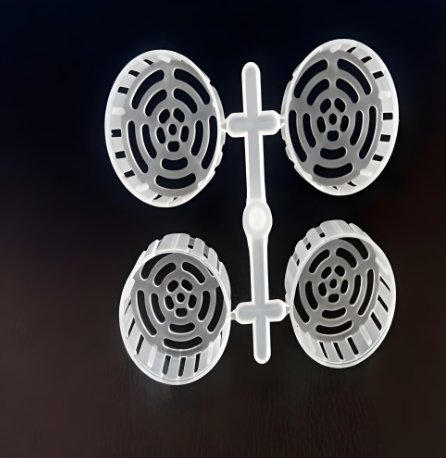
In Electronic Injection Molding, every choice matters.
Runner systems are one of the most important.
There are two main types.
Hot runner and cold runner systems.
Each works differently.
Each affects the mold, part quality, and cost.
Choosing the right one can save money.
It can also reduce mold wear.
A skilled Mold Maker understands both systems.
They know which is best for your part.
They also know how to extend mold life.
Let’s look at both systems in detail.
What Is a Cold Runner System?
Cold runners are simple.
They are channels that guide molten plastic into the cavities.
These channels cool along with the part.
The runner is ejected with the part and then removed as waste.
Advantages
- Lower mold cost
- Easy to maintain
- Good for simple materials
- Less complex design
Disadvantages
- More waste
- Longer cycle time
- Manual or automated trimming
- More wear from cooling and ejection
Cold runners are still common.
They work well for small runs.
But they add wear in high-volume Electronic Injection Molding.
What Is a Hot Runner System?
Hot runners are more advanced.
They use heated nozzles and manifolds.
The plastic stays molten until it enters the cavity.
There is no cold runner to trim or recycle.
Advantages
- No runner waste
- Faster cycle times
- Better surface finish
- Less material stress
- Less wear from fewer ejections
Disadvantages
- Higher mold cost
- Needs expert setup
- Can be harder to maintain
- More complex temperature control
Hot runners shine in high-volume jobs.
They also reduce mold wear over time.
A skilled Mold Maker will help you set them up right.
Key Differences Between Hot and Cold Runners
| Feature | Hot Runner | Cold Runner |
|---|---|---|
| Waste | Very low | High |
| Speed | Fast | Slower |
| Cost | High upfront | Lower upfront |
| Maintenance | Medium to High | Low |
| Part Finish | Excellent | Good |
| Mold Wear | Low | Higher |
In Electronic Injection Molding, lower wear means longer mold life.
That’s good for cost and quality.
When to Use Cold Runners
Cold runners are best for:
- Small part batches
- Simple designs
- Low-cost production
- Materials sensitive to heat
Cold runners still have a place.
But they wear molds faster in big runs.
This causes downtime and extra cost.
If you use them for high-volume Electronic Injection Molding,
you need a smart Mold Maker.
They must design for easy runner ejection and cooling balance.
When to Use Hot Runners
Hot runners are better for:
- High-volume parts
- Complex shapes
- Expensive materials
- Tight tolerances
They help in making electronic housings, connectors, and sensor parts.
These need clean flow and little waste.
In Electronic Injection Molding, hot runners give better results.
They protect the mold from wear.
They also reduce the need for cleaning and repairs.
But setup is key.
Let a Mold Maker handle it.
Reducing Mold Wear in High-Volume Runs
Whether you use hot or cold runners, mold wear is a risk.
Here’s how to manage it.
1. Choose the Right Steel
Harder steels last longer.
They resist scratches and pressure.
Mold Makers often use H13 or S136 for electronic molds.
2. Polish Wear Zones
Gate areas, slides, and lifters wear out first.
Polishing these zones reduces friction.
3. Use Coatings
Nitriding or PVD coatings help.
They lower surface friction.
They also reduce heat buildup.
4. Add Cooling Where Needed
Extra cooling prevents heat damage.
This is very important in Electronic Injection Molding.
Too much heat causes plastic build-up and mold damage.
5. Maintain the Mold
Regular cleaning keeps debris away.
Inspect gates and vents often.
Fix small problems early.
That’s what a smart Mold Maker does.
How the Runner System Affects Mold Wear
The runner system touches the whole mold.
It sends heat and pressure through it.
Hot runners lower wear by:
- Reducing ejections
- Keeping plastic flow smooth
- Preventing cold starts
Cold runners increase wear by:
- Adding runner drag
- Causing uneven cooling
- Requiring trimming tools
In Electronic Injection Molding, even tiny wear can ruin a part.
The runner system must be chosen carefully.
That’s the Mold Maker’s job.
Smart Mold Design = Less Wear
A good mold reduces wear.
No matter the runner type.
What helps:
- Balanced flow
- Uniform cooling
- Sharp venting
- Precision fitting
The Mold Maker plays a big role here.
They check part design, material flow, and gate location.
They also design for ease of repair.
Their choices decide how long your mold lasts.
In Electronic Injection Molding, runner systems matter.
They affect part quality, speed, cost, and mold life.
Cold runners are cheaper and easier.
But they wear molds faster.
Hot runners are cleaner and faster.
They reduce wear and boost output.
In high-volume production, hot runners win.
They save time.
They protect the mold.
They improve quality.
But they must be done right.
That’s where the Mold Maker steps in.
Their skill can extend your mold’s life.
And help your business grow.
If you want success in Electronic Injection Molding,
choose the right runner system.
And always work with a smart, experienced Mold Maker.
